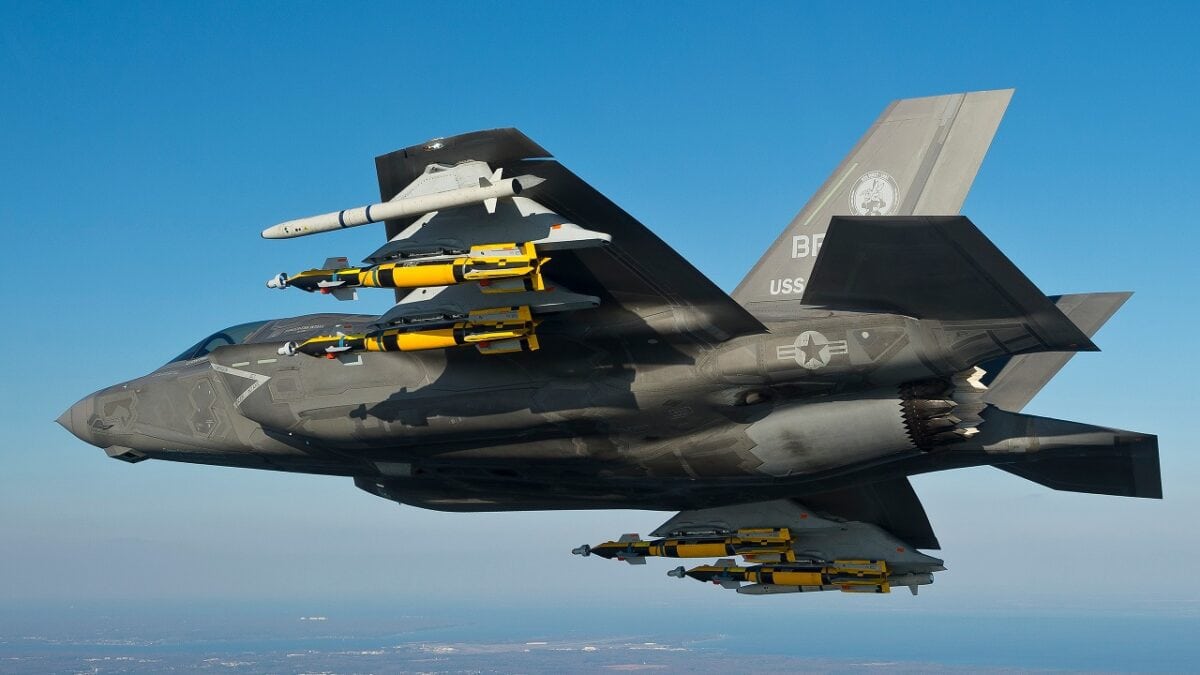The F-35 is spreading like wildfire throughout the free world to include NATO allies in Europe to include Poland, Germany, Finland, and Switzerland as well as critical areas of the Pacific such as Japan, but why hasn’t the Pentagon, Biden administration, or Congress approved the sale of the F-35 to Taiwan?
It would certainly make sense for Taiwan to operate F-35s along with Singapore, Japan, Australia, and South Korea, given that 5th-generation air superiority is arguably the largest advantage the U.S. and its allies would have over China.
Beijing has a large and threatening high-tech Navy, a massive stockpile of ballistic missiles, and large numbers of ground forces, yet the PRC seems to lack the ability to mass 5th-gen air power in a way that would challenge the U.S. and its allies.
Of course, China has the J-20, yet it must launch from land and, while the PRC Navy (PLAN) is developing the carrier-launched J-31 stealth fighter jet it is not clear how far along the project is or if they can exist in impactful numbers.
Air Superiority Island
Certainly, as a small island only 100 miles off the coast of China, Taiwan is within the attack range of China’s growing fleet of J-20s, yet it seems unlikely that China would be able to provide 5th-generation air superiority in support of any amphibious assault on Taiwan.
Conversely, it seems much more likely that U.S. and allied 5th-generation aircraft would be positioned to outmatch and destroy any Chinese air presence and essentially incinerate or destroy an attacking Chinese amphibious force.
Another possibility to consider is simply that the U.S. and its Southeastern Asian allies already have the 5th-generation air superiority necessary to outmatch China in the air. Japan has recently made a very large, multi-billion F-35 buy, Korea is already an F-35 partner and the U.S. Navy makes Pacific theater “forward presence” a huge priority.
For several years now, the Pentagon has ensured an increasingly large U.S. Navy Pacific footprint in support of the multi-service Pacific Pivot put into effect years ago.
This means that there will continue to be consistent Carrier Strike Group deployments to the Pacific theater, including war preparation exercises such as “dual carrier” training operations.
Also, existing big-deck amphibious assault ships can travel with up to 13 F-35Bs on board, meaning 5th-generation air power can be forward located in potentially impactful numbers to ensure air superiority in the event of an engagement with China.
Why Not Send F-35s to Taiwan?
Given these circumstances, perhaps the Pentagon may think it too provocative or potentially inflammatory to send F-35s to Taiwan, despite the fact that it would both make sense and be highly impactful.
Arguably, not sending F-35s to Taiwan could be seen as a bit of a disconnect, because the Pentagon already sends missiles, helicopters, and even Abrams tanks to Taiwan. Abrams tanks could, in particular, slow down or potentially stop a Chinese amphibious landing and prevent the PLA from occupying territory or seizing ground ashore.

F-35 Joint Strike Fighter. Image Credit: Lockheed Martin.
The F-35, however, could be seen as quite different than legacy platforms such as Apaches and tanks, as it is arguably something the People’s Republic of China could see as an aggressive move by the West and perhaps inspire or move the countries much closer to conflict.
Despite these risks, however, it does seem to make sense to send the F-35 to Taiwan, as it is an extremely credible deterrent. Beijing would likely think twice about attacking Taiwan if its amphibious assault force or aircraft had to encounter Taiwanese F-35s.

F-35. Image Credit: Creative Commons.
Kris Osborn is the Military Affairs Editor of 19FortyFive and President of Warrior Maven – Center for Military Modernization. Osborn previously served at the Pentagon as a Highly Qualified Expert with the Office of the Assistant Secretary of the Army—Acquisition, Logistics & Technology. Osborn has also worked as an anchor and on-air military specialist at national TV networks. He has appeared as a guest military expert on Fox News, MSNBC, The Military Channel, and The History Channel. He also has a Masters Degree in Comparative Literature from Columbia University.
From the Vault
‘You Really Oughta Go Home’: F-22 Raptor Stealth Fighter Flew Under F-4 From Iran

